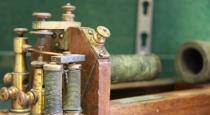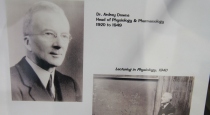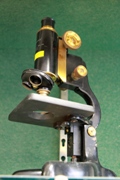History of Department
History of the Department of Physiology
(written by Dr. E Otto Höhn, 1983)
The Faculty of Medicine was founded in 1913, five years after the official opening of the University of Alberta. Until 1922, only the first three years of the medical course (i.e. up to the completion of the basic sciences) were offered here. Students from here completed their courses at one or other of the eastern Canadian medical schools.
The first Professor of Physiology and Pharmacology was H H Mosher, who functioned in this capacity from 1914 to 1916 with the part-time assistance of I R Bell. Teaching of all basic sciences until 1920/21, when the Medical Building (the present Dentistry/Pharmacy Centre) was completed, was conducted on the third floor of the women's residence, Pembina Hall. In 1916, Mosher went overseas with an army of field ambulance and was in command of the same in 1918 at the age of 27. The gold medal named in his honor, the highest award in the Medical Faculty, was established by the Voluntary Overseas Medical Officers' Association.
J B Collip, distinguished by his preparation of parathyroid hormone while at this university, joined the department in the fall of 1915, and from 1916 onwards was in charge of the teaching of physiology and pharmacology, as well as biochemistry (a separate department for the latter science was not created until 1920). During 1919, largely as a result of returns from the Armed Forces, the demand for admission to the Medical School increased markedly, so that between 1920 and 1921 the Medical Building was constructed. It lacked the east and west wings, with which it was later completed, and housed, in addition to the basic medical sciences, the Departments of Chemistry, Zoology and Entomology. On Collip's departure to eastern Canada in 1920, A W Downs became Head of Physiology and Pharmacology until his retirement in 1949. By 1926, when a full medical course was given, this department had a staff of three.
The depression of the early thirties reduced admissions of medical students from 31 in 1931 to 15 in 1933. Staff salaries were reduced, departmental budgets were cut and research funds almost disappeared.
Under the Downs period, which E O Höhn joined in 1947, student labs in physiology seemed to consist entirely of what could be recorded on a kymograph. Lacquered tracings were submitted to the staff, who were only allowed to accept them when absolutely immaculate, and only then was the student allowed to move on to the next experiment.
Professor H V Rice succeeded Dr. Downs in 1949. Rice was enthusiastic about electronics and soon brought about the complete modernization of the equipment in the student laboratories. His love for the design and manufacture of instruments, electronics and other instruments, grew with the years, so that in 1955 he resigned in favor of a position in charge of the Medical Engineering Section of St. Paul's Hospital in Vancouver.
His place at our university was taken by Dr. J W Pearce, who remained in charge of teaching physiology and pharmacology until a separate Department of Pharmacology was set up in 1961. Dr. Pearce continued as Head of Physiology until his resignation in 1965. The department had offered the degree of MSc since the twenties, but PhD's have only been offered since Dr. Pearce's tenure. After leaving Alberta, he joined the Department of Physiology at the University of Toronto. He died at the age of 51 in a traffic accident near Toronto.
The [then] present chairman, Dr. M. Schachter, was appointed Head in 1965. During the period of time from the mid-sixties to the present, the department has developed into a strong research and teaching department. Several of the staff members have excellent international reputations, and research funding from external sources exceeds one million dollars per year. The department consist of fourteen academic staff, including the chairman, seven Professors, three Associate Professors, two Assistant Professors (AHFMR Scholars) and one Faculty Service Officer (with research, teaching and administrative responsibilities). Dr. E O Höhn was appointed to the department in 1947, Drs. M Schachter and S M Padsha in 1965, Dr. R B Stein in 1968, and Drs. K J Hutchison, S C Barton and K G Pearson in 1969. Further appointments were as follows: Drs. A S French and E J Sanders in 1970, Dr. M J Poznansky in 1975, Dr. E Karpinski in 1976 and Dr. C I Cheeseman in 1979. With the availability of funding from the Alberta Heritage Foundation for Medical Research, two Scholars were successful applicants and were appointed at the Assistant Professor level in 1982: Drs. G A Bourne and S M Jarvis. As more space becomes available, further appointments are anticipated in order to improve and strengthen the department.



